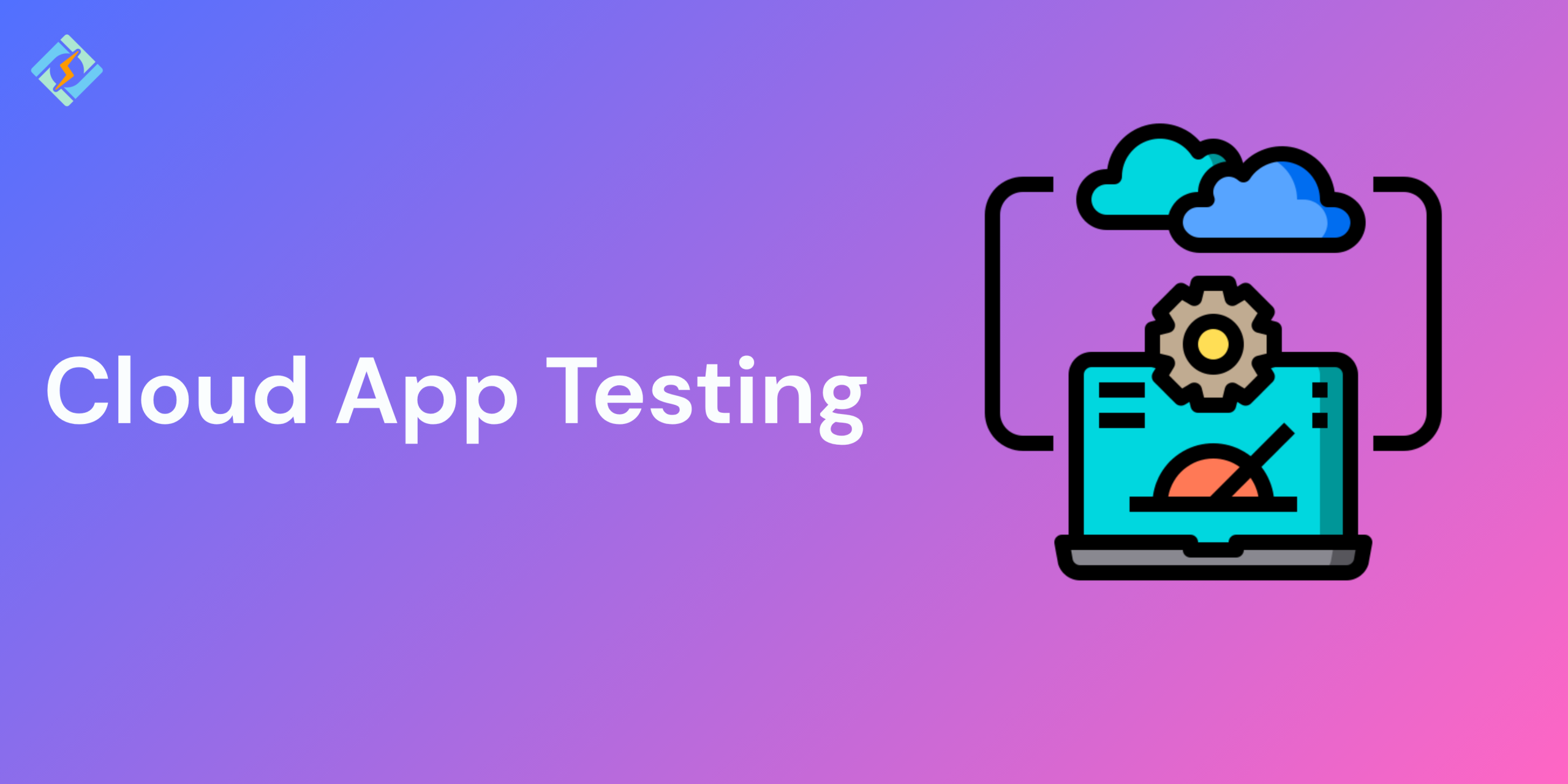Cloud computing has revolutionized the software development process fundamentally. From elastic infrastructure and on-demand resources to cost-efficient deployment and real-time collaboration, cloud technology is an enabler of today’s digital innovations. With companies continuing to create, deploy, and grow applications in the cloud, the importance of successful cloud app testing has never been more pivotal.
Cloud app testing is not merely a part of mainstream software testing; it’s an entirely new paradigm. It demands new strategies, tools, and mentalities to test applications running in dynamic, virtualized, and frequently distributed cloud settings. Whether you are testing web applications running on AWS, mobile backends on Azure, or enterprise apps on Google Cloud, quality, performance, security, and scalability in the cloud pose distinct challenges and solutions.
This article delves deep into the world of cloud application testing. We will examine its types, advantages, tools, disadvantages, and best practices. As a QA engineer, developer, or DevOps expert, this tutorial is designed to assist you in creating a strong testing strategy specific to the cloud.
What is Cloud App Testing?

Cloud app testing is a process of testing and validating cloud applications or services to ensure they satisfy functionality, performance, reliability, and security needs when accessed through the internet.
In contrast to regular testing performed on local environments or static servers, cloud app testing utilizes cloud infrastructure and services to mimic real-world scenarios such as diverse network speeds, locations of users, and devices. Additionally, it involves testing the ability of the application to scale and perform under dynamic resource provisioning and changing loads.
Key Characteristics
- Virtualized testing infrastructure
- Elastic scalability
- On-demand environments
- Pay-as-you-go model
- Simulates real-world user conditions
Types of Cloud App Testing
Knowing the various types of testing for cloud application testing is important in developing a comprehensive testing strategy. Following are the key categories:
Get exclusive access to all things tech-savvy, and be the first to receive
the latest updates directly in your inbox.
Functional Testing
Verifies the primary features and functionality of the application. Confirms that the application behaves as it should under different user scenarios.
- Smoke testing
- Regression testing
- Integration testing
- User acceptance testing (UAT)
Performance Testing
Verifies how the application responds to different loads and stresses.
- Load Testing: Mimics normal to maximum user load.
- Stress Testing: Tests the application beyond its working capabilities.
- Scalability Testing: Tests scaling horizontally and vertically.
- Soak Testing: Checks the stability of the system over a prolonged period.
Compatibility Testing
Ensures the application behaves consistently across:
- Browsers (Chrome, Firefox, Safari, Edge)
- Operating systems (Windows, macOS, Linux)
- Devices (mobile, tablet, desktop)
Security Testing
Checks the application’s defenses against vulnerability and threats.
- Authentication & Authorization checks
- Data encryption validation
- Penetration testing
- OWASP Top 10 compliance
Disaster Recovery and Failover Testing
Verifies how efficiently the application recovers from failures or outages. Simulates regional failures, server outages, and database crashes.
Multi-Tenancy Testing
In case of SaaS applications, checks data isolation and performance are preserved across tenants.
Data Integrity Testing
Checks that cloud data transactions are consistent and reliable during and after processes such as migration, scaling, or failover.
Cloud Testing Models
There are various models of cloud testing based on the infrastructure or service layer being used:
Cloud Testing
The application is deployed in the cloud, and the testing itself is also carried out using cloud-based tools.
Example: Testing a SaaS CRM application deployed on Azure through BrowserStack.

Testing on the Cloud
The application is locally or on-premises, yet cloud-based tools and environments are utilized for testing.
Example: Testing an on-premise mobile app using AWS Device Farm.
Cross-Cloud Testing
Applied in multi-cloud or hybrid-cloud setups. Tests distributed applications running across platforms such as AWS and GCP for integration and homogeneity.
Advantages of Cloud App Testing
- Cost-effectiveness
Cloud testing avoids the expense of physical hardware, test servers, and upkeep. Pay-as-you-go and on-demand consumption enable improved budgetary control. - Scalability
You can test thousands of users at once on a scalable cloud infrastructure, which is hard to replicate in local environments. - Faster Time to Market
On-the-fly provisioning of test environments accelerates testing cycles and minimizes bottlenecks in the CI/CD pipeline. - Global Access
Cloud testing environments can be accessed remotely, enabling distributed QA teams to work in real time. - Real-World Simulation
You can replicate real-world scenarios such as mixed geographies, network bandwidths, and devices to more realistically assess your app’s preparedness. - Integration with CI/CD Tools
Most cloud testing environments integrate well with Jenkins, GitLab, Azure DevOps, and other DevOps tools to enable automation.
Best Cloud App Testing Tools
There are some tools and platforms designed specifically for cloud-based app testing. Here are some of the most popular ones:
- Selenium Grid on Cloud (e.g., Sauce Labs, BrowserStack)
Enables cross-browser functional testing on cloud-hosted environments. - AWS Device Farm
For mobile and web application testing on real devices in Amazon’s cloud. - Azure Test Plans
An Azure DevOps feature, provides tools for manual and exploratory testing. - Google Cloud Test Lab (Firebase Test Lab)
Provides automated testing for Android and iOS applications across a variety of devices. - Apache JMeter (Cloud Hosted)
JMeter, when running on cloud infrastructures such as RedLine13 or BlazeMeter, is an effective tool for load and stress testing. - TestComplete by SmartBear
Solid functional UI testing software with the capability to execute tests in the cloud. - LoadNinja
Performs performance testing with cloud infrastructure. Does not need scripting, so it can be used by non-programmers. - Kobiton
Cloud testing platform for mobile applications using real devices.
Challenges in Cloud App Testing
Whereas cloud testing is accompanied by flexibility and quickness, it is not challenge-free.
- Data Privacy and Security
Sending confidential data via public cloud networks may expose it to security threats. Compliance with GDPR, HIPAA, and other regulatory requirements is paramount. - Latency and Bandwidth Unpredictability
Testing could be marked by inconsistent results owing to unstable cloud latency or throttling, particularly by regions. - Complexity of Integration
Cloud-native applications tend to depend on a network of microservices and APIs that have to be tested separately as well as collectively as a part of the overall system. - Environment Configuration
Configuring the appropriate cloud environment with necessary dependencies, settings, and versioning can be intricate. - Vendor Lock-in
Use of a specific cloud provider’s test tools may restrict flexibility and portability across platforms. - Test Data Management
Handling realistic test data in cloud environments without violating privacy is a top priority.
Cloud App Testing vs Traditional Testing
| Aspect | Traditional Testing | Cloud App Testing |
|---|---|---|
| Infrastructure | On-premises, static | Virtualized, dynamic, on-demand |
| Cost | High upfront investment | Pay-as-you-go |
| Scalability | Limited | Highly scalable |
| Access | Restricted to local network | Global access |
| Testing Environments | Manually configured | Automated, on-demand environments |
| Tool Integration | Limited CI/CD integration | Seamless DevOps and CI/CD integration |
| Simulation Capabilities | Limited real-world scenarios | Simulates real-world networks and devices |
Best Practices for Cloud App Testing
The following are some best practices to help your cloud app testing be effective and future-proof:
- Message Every Possible Thing
From provisioning test environments to test runs and reporting automation eliminates human errors and hastens the process. - Utilize Cloud-Native Testing Tools
Use testing tools that are natively built to operate in cloud environments. They provide more seamless integrations and are better performance-tuned. - Maintain Data Confidentiality
Encrypt test data and employ anonymized data sets. Protect test environments with VPN or private subnets. - Test Regionally
Mimic users of varied geographies to confirm latency, performance, and localization. - Add Chaos Testing
Add random failures or interruptions to check your app’s robustness and recovery mechanisms. - Real-Time Monitoring
Implement observability tools such as Datadog, New Relic, or Prometheus to track test runs and app health. - Leverage Containerization
Utilize Docker or Kubernetes to containerize test environments. This guarantees uniformity in varying test cycles.
Future of Cloud App Testing
As cloud technologies advance, so too will the testing environment. Trends on the horizon are:
- AI-Powered Testing
Machine learning algorithms can now anticipate failure, create test cases, and maximize test coverage with minimal human intervention. - Serverless Testing
Testing practices are evolving to meet ephemeral environments such as AWS Lambda and Azure Functions where conventional practices are not applicable. - Shift-Left and Shift-Right Testing
Testing no longer happens after development. It’s being implemented earlier (shift-left) and into production (shift-right) for ongoing validation. - Cloud-Native Chaos Engineering
Chaos tools such as Gremlin are being employed in the cloud to experiment with fault tolerance in distributed systems.
Conclusion
Cloud app testing is no longer an extravagance it’s a requirement. As companies sprint toward digital transformation, quality assurance of cloud-native applications has a direct effect on user experience, operational resilience, and business success. By embracing sound testing frameworks, taking advantage of cloud-specific tools, and integrating automation, teams are able to deliver more rapid, secure, and trustworthy software.
Cloud testing is not merely “test in the cloud” but “test for the cloud.” That involves knowledge of the cloud-native design, microservices, APIs, containers, CI/CD pipelines, and end-user environments. It’s a continuously changing practice that demands ongoing learning, adapting, and strategic implementation.
FAQs
What is the difference between cloud testing and traditional software testing?
Cloud testing uses virtualized, scalable, and on-demand resources for testing, while traditional testing relies on static, often expensive on-premise infrastructure
What are the common tools used in cloud app testing?
Popular tools include BrowserStack, AWS Device Farm, BlazeMeter, JMeter, Selenium Grid, TestComplete, and LoadNinja.
How safe is cloud application testing?
It can be extremely secure, as long as you utilize encrypted connections, private networks, and abide by compliance guidelines such as GDPR, HIPAA, or PCI-DSS.



